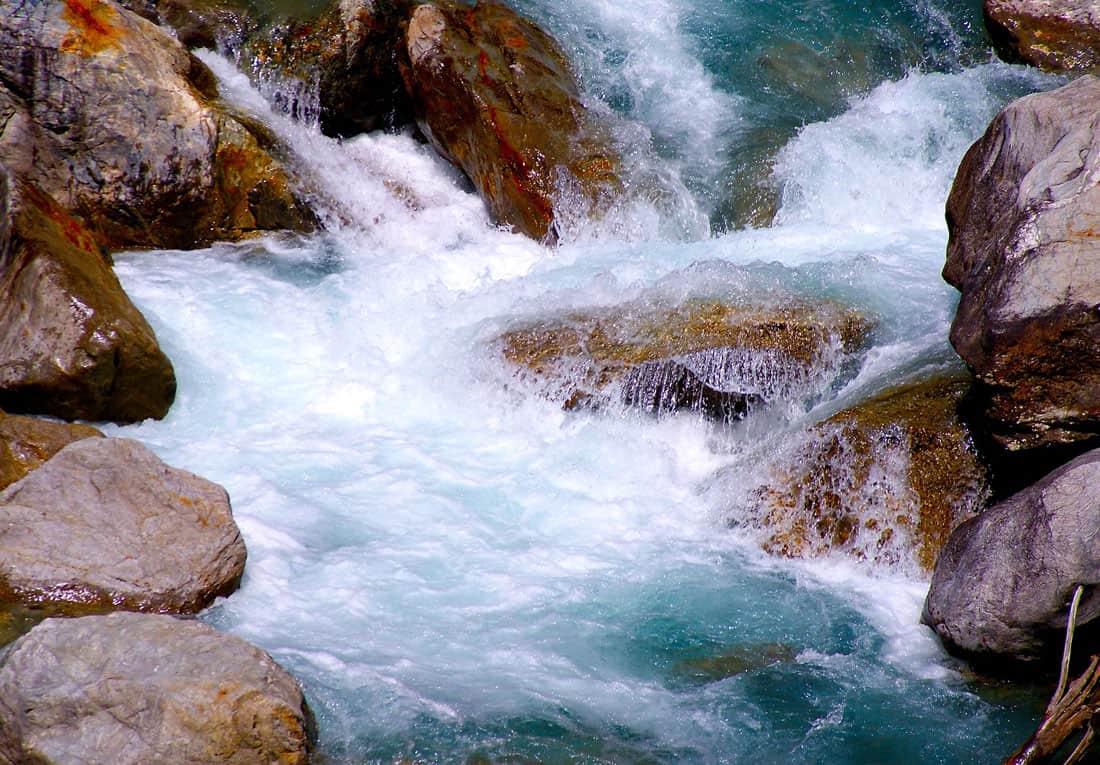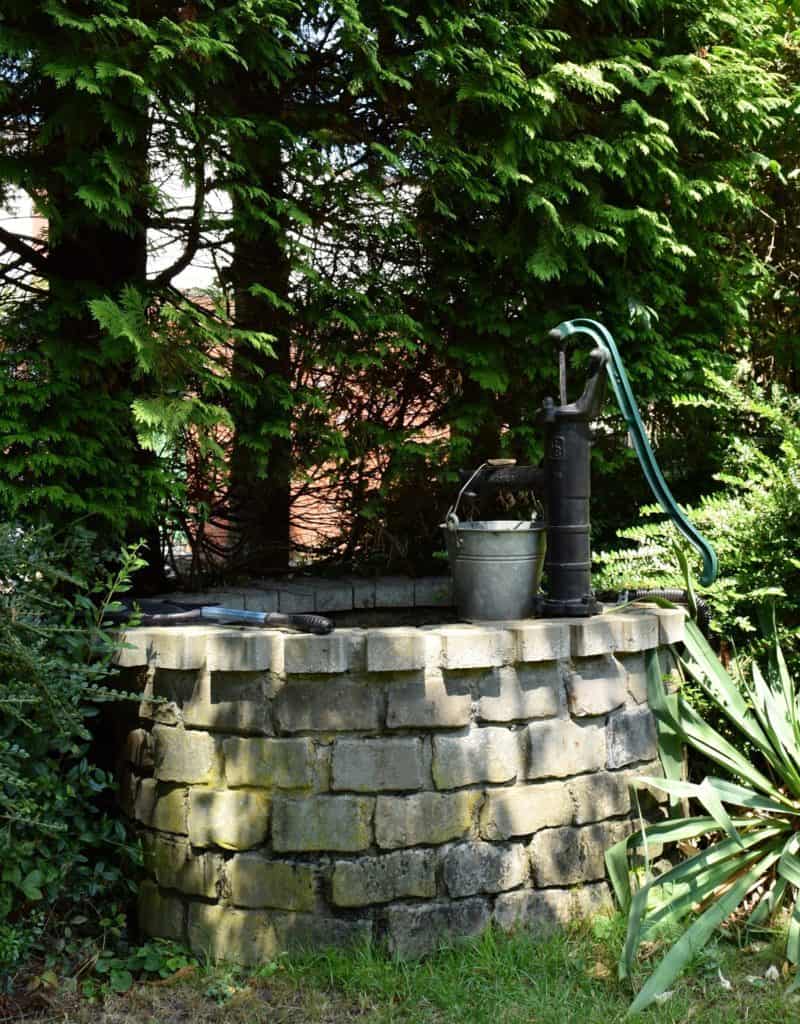
Water is the most viable element for sustaining life on any remote, off-grid, or rural property.
Assuming where your property is located, there’s no city water source available, there are only a few other options for gathering water when your remote or rural property with a cabin or living quarters is off-grid.
Each of these could require some proper planning, a pump of some sort, and some knowledge of piping, oh and possibly a power source.
Creek, River, or Lake
If you live near a large body of water such as a creek, river, or lake, you could easily pull water from it into a cistern for storage. Add a filtering system to filter out any impurities before it reaches your trailer, cabin, or other living areas, and you have a great source of water. However, a lot of us don’t have land that has that perfect source of year-round water.
For me, I happen to have a seasonal creek that I plan on using to collect water into either a larger 500-gallon barrel or some other type of container that can be used as a cistern. Not necessarily for drinking but more for watering plants and any pets or other animals on our eventual woodsy acres. It can also be handy for firefighting if there were to be a need. Maybe this can be something you too can consider.
Rain Run-off Harvesting
If there are buildings of any type on the property with a roof, then it wouldn’t take much to set up a harvesting system to catch rainwater and melting snow.
Keep this in mind when you’re in the early stages of building your cabin or homestead and need to have covered lumber or firewood storage. Design such covers so that water can easily be harvested from the roof. As for catching and storing the water, there are many different ways, from a converted horse trough, recycled 55-gallon food drums, all the way up to a large water bladder or buried cistern.
Where we are located in the summers are pretty hot and dry for several months. So harvesting water would be in addition to collecting water from the seasonal creek in the springtime and again would be more for secondary purposes.
Haul Water Onto the Property
Depending on where you’re located and how remote your property, it might be possible to have water hauled in by a small tanker truck. For a family living on their land fulltime, this might not be very practical unless you have a large cistern to hold enough to keep from running out between deliveries.
It’s also possible to have your tanker or a tank on a trailer that can be taken to an off-property location to have filled. Personally, this would be both a last resort and temporary option while waiting to find a better solution.
Have a Well Drilled
Although it is possible for individuals to dig or drill their own wells with limitations, be aware that for many states you’ll need to have it done by a professional well drilling company and at the same time have the water tested before consuming it. Even if it’s not required to have the water checked, common sense should say to have it tested.
Be wise and check your local and state requirements or call a local well driller for more information about your area.
Wells can be very expensive upfront, but once you have one in place, it’s a tremendous constant source of water with no worries of it being turned off unless of course, it goes dry.
There will most likely be a permit involved to have a well drilled. Once completed, if remote and off-grid there is then the question on how to get the water out from the ground using some form of a pump and pressure tank along with how to power that pump. There are only a few options.

Hand Pump
Yes, they still make the old fashioned hand pump where you lift a long arm up and down until water begins pouring out of the pump’s spigot.
Solar power the pump.
Today there is the option of installing a pump that runs on DC power that comes from a solar array and acid-filled batteries. These pumps can be manufactured from either stainless steel or aluminum casing.
Here is a helpful link to a highly recommended company by others and one I’ll be looking to use once my well is in place.
Wind Power
For this type of pump, you’ll have to be in a region that has enough wind to support this option.
There are actually two possible ways to use the wind.
- An old fashioned windmill that has been used for many years and that you see in a lot of movies. As the wind blows through the blades, it turns a rotor that in turn drives a rod connected to the pump. As the rotor rotates, it forces the water up out of the well into a pipe.
- A turbine windmill creates DC electricity by turning a generator as the wind blows through the blades. That electricity then flows through a controller and into a bank of batteries where the energy stored. Then either that power directly powers a good pump or is converted into AC power which in turn runs an AC electric pump.
There is one thing all humans have in common, we all require water to stay alive.
BASIC WATER NEEDS
Assuming there is a cabin, home, or other living accommodations here are some of the basic needs for water on any property,
- Drinking. Without exception, every human being needs water for hydration. In fact according to smarter people than myself say we can’t go without water for more than 3 days. That’s not very long.
- Washing hands.
- For a healthy life, it’s suggested to start with good hygiene practices.
- Basic first aid needs. There’s no way to get away from an occasional cut when working on your property. Those cuts will require water to wash and rinse to help prevent the wound from getting infected.
- Cooking. Unless you’re eating nuts and dried meat only you’re going to need water for this purpose. Plus don’t forget the necessary water for coffee or tea during or after your meal.
- Bathing or Showering. Again for the purpose, good hygiene taking a bath or a shower helps.
- Toilet Flushing. If you choose a septic system on your property, then you’ll definitely require water, about five gallons per flush, for proper operation of a toilet or toilets if you’ll have multiple bathrooms.
- Gardening. We all want to have a garden on our property so that we can grow our own food. Gardens will take a substantial amount of water so this is where you might offset the requirements with something like rainwater harvesting.
- Animals. Animals also take a lot of water, and if you have them on your property, you’ll need to calculate their requirements into your water calculations.
Some other questions regarding water needs.
How much water does a person use a day?
Depending on what website you read or the person you ask you will hear varying answers. Of course, it also depends on your lifestyle, but somewhere from 60 to 110 gallons per day.
